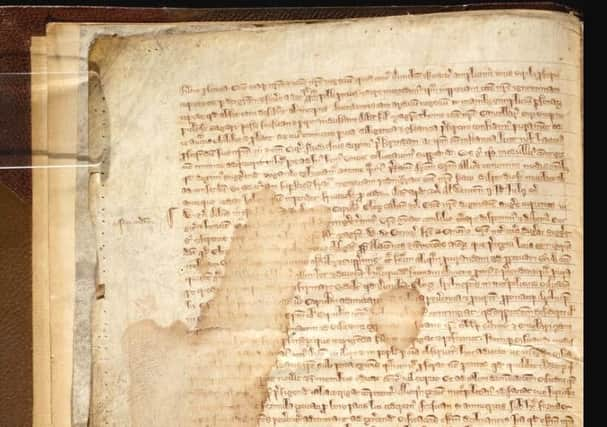Digital history: Archbishops' Registers go online for first time


The York Registers, handwritten on over 10,000 individual parchment folios, are one of the earliest and largest locally-produced series of archives from the medieval and early modern periods.
They provide unique insights into ecclesiastical, political and cultural history across the North of England from 1225-1650 - a period that witnessed significant events including the Black Death, the Wars of the Roses, the Reformation and the English Civil War.
Advertisement
Hide AdAdvertisement
Hide Ad“Starting fifty years before corresponding examples for the Archbishops of Canterbury, they are unparalleled in Europe,” said a spokesman for the University of York, which is launching the website today.
In July 1348 the register shows Archbishop Zouche issued a warning throughout the diocese, when the Black Death was raging further south, of “great mortalities, pestilences and infections of the air”.
The ‘Great Mortality’, as it was then known, arrived in Yorkshire in February 1349, and quickly spread. The clergy were on the front line of the disease, bringing comfort to the dying, hearing final confessions and organising burials - putting them at great risk of infection.
Estimates suggest the death rate of clergy in some parts of the Archdiocese at the time could have been as high as 48 per cent.
Advertisement
Hide AdAdvertisement
Hide AdThe Archbishops of York were closely associated with the Tudor monarchy - Thomas Wolsey being Archbishop of York from 1514 until his arrest at Cawood, one of his official residences as Archbishop, in 1530.
The Register of his successor, Edward Lee, contains copies of the official evidence relating to Henry VIII’s divorce from his fourth wife, Anne of Cleves.
Henry and Anne were married in January 1540, though the statements in Lee’s register show this was not a marriage that Henry was particularly enamoured with.
It records Henry as saying, after his first meeting with Anne: “I see no such thing in her, as haith benn shewed me of her and am ashamed that men haith so praesed her as they have dooun, and I like her nott”.
Advertisement
Hide AdAdvertisement
Hide AdThe website, launched today, provides free access to over 20,000 images of registers. It can be found at http://archbishopsregisters.york.ac.uk
Users will be able to research a vast range of topics, from architecture, almsgiving, sin, buildings and transport, to church furnishings, weapons and war.
Funded by the Andrew W Mellon Foundation, the digitisation project took some 15 months to complete, with specialist conservation and imaging work undertaken at the university’s Borthwick Institute for Archives, and technical development carried out by the University of York Digital Library.
Professor Mark Ormrod, the university’s dean of arts and humanities, said: “The launch of the Archbishops’ Registers website brings to fruition a major project in the Digital Humanities, its content and method being of truly international importance.”
He said it ensured: “..free and remote access to the wealth of information and interest contained in these priceless historical documents.”